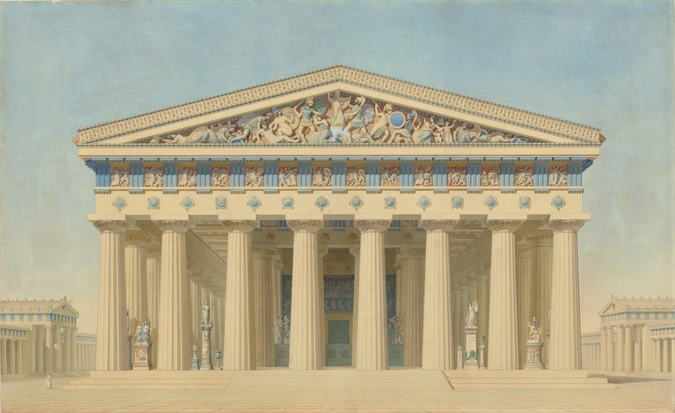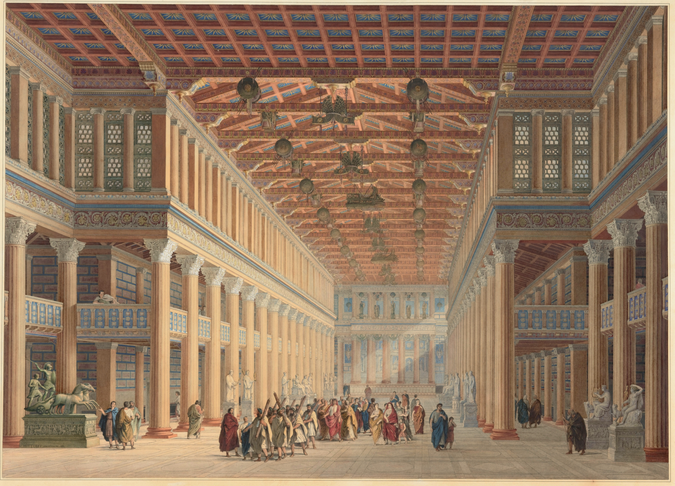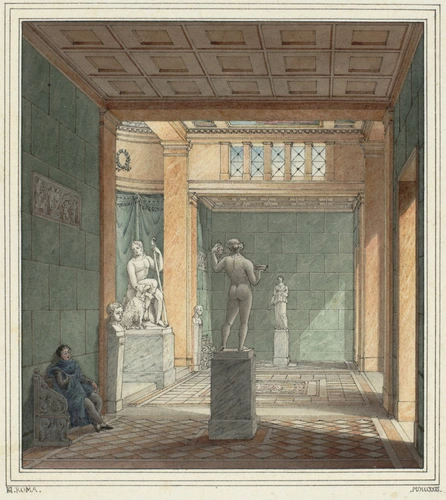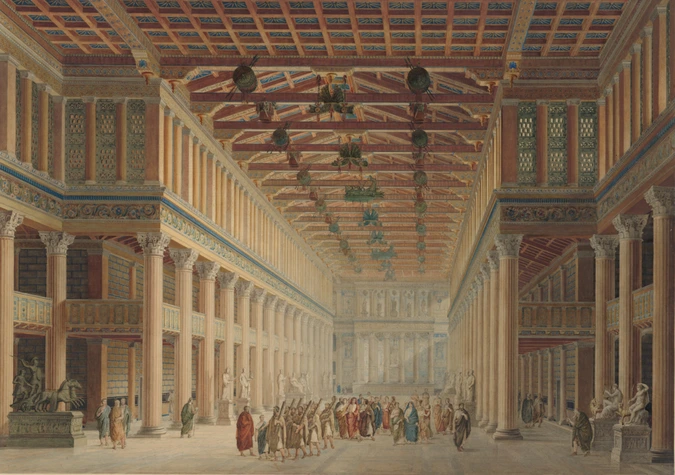Elévation du Temple de Dendérah, Egypte
Jacques-Ignace Hittorff, a prolific builder (church of St Vincent de Paul, Gare du Nord railway station in Paris), was an architect with a keen interest in archaeology who triggered a debate in the late 1820s on the use of polychromy in classical Greek architecture. His taste for the history of colour in architecture took him to Greece and Italy and more particularly to Sicily. Although he did not go to Egypt, his friends and later his family introduced him to the Egyptian civilisation. Indeed, in 1822, his travelling companion, the architect François-Christian Gau, exhibited in the Salon coloured studies of Egyptian monuments and at the same time published a work illustrated with coloured plates, Les Antiquités de la Nubie ou Monuments inédits du bord du Nil. Two years later, Hittorff married the daughter of the famous architect Jean-Baptiste Le Père, who had been a member of Bonaparte's Egyptian expedition in 1798 from which he brought back a large number of remarkable measured drawings of monuments. It was probably on the basis of drawings made by his father-in-law, who died in 1844, that Hittorff composed this impressive watercolour reconstruction. The Dendera temple, built in the Ptolemaic and Roman period, is one of the best preserved temples in Egypt. It is dedicated to the great goddess Hathor and comprises several parts. The hypostyle hall is shown here with its monumental Hathoric columns, engraved with hieroglyphic inscriptions and ending in capitals representing the four faces of the goddess. The ceiling of the room was entirely painted with astronomical scenes while the walls were decorated with deities. In this work, Hittorff once again demonstrates his gift for understanding and handling colour.





